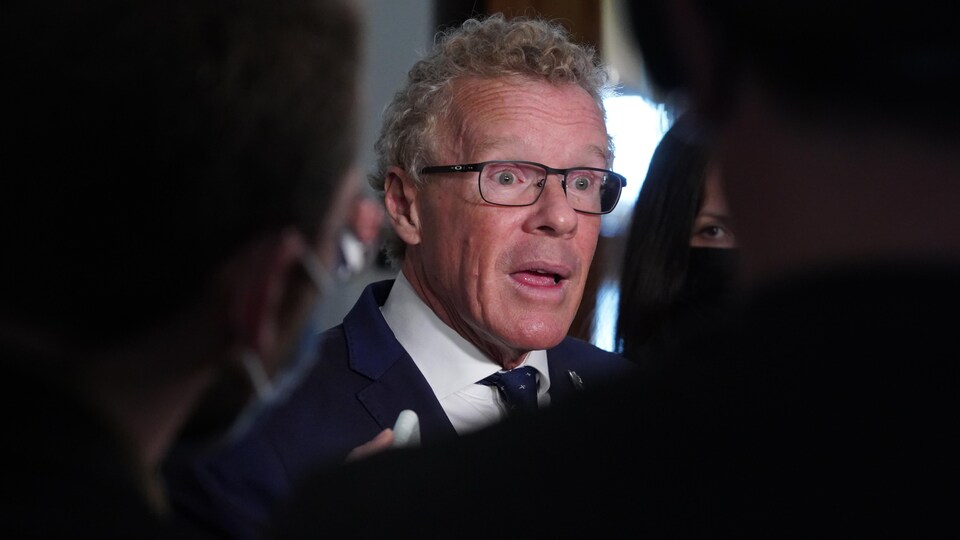In recent weeks, the Legault government has reiterated that Quebec’s reception capacity is limited to 50,000 immigrants per year. However, the Ministry of Immigration, Francisation and Integration (MIFI) could not provide a study that supports this assertion, Radio-Canada said.
The Ministry’s information and evaluation work on Quebec’s acceptance and integration capacity is not listed in one document.confirmed by email the spokesperson for MIFI, Émilie Vézina.
MIFI sent two documents to Radio-Canada, but none of them studied Quebec’s reception capacity. This is the consultation book used to plan immigration limits in 2019 and a statistical picture of the same year.
Neither of these two documents shows that Quebec is incapable of accepting more than 50,000 immigrants a year, as asserted by Premier François Legault and his Minister of Immigration, Jean Boulet.
Despite this, Ms. assures us. Vézina or a evaluation work is made to the thresholds of immigration reflects the carrying capacity of the province.
Several indicators are used, MIFI said, such as the gap between the unemployment rate of immigrants and natives, access to housing, the offer of francization and regional integration services.
Arbitrary
We don’t know what the reception capacity really isacknowledges Anne-Michèle Meggs, former director of planning and accountability at MIFI, has retired since 2019. We don’t know if it should be more or less!
According to Ms Meggs, the MIFI does not always have data to measure this type of object and, more importantly, there is no consensus on carrying capacity.
So, when Premier Legault or Minister Boulet declared that Quebec’s reception capacity was limited to 50,000 people per year, it’s pretty arbitrarysaid the former officer.
” We have not yet been able to make a direct link between the labor market and the exact number of people we should hire each year. “
Ms. also teaches. Meggs that, when Quebec sets a target of 50,000 immigrants per year, it is newcomers who have obtained their permanent residence and, for the most part, are already on Quebec land.
Including temporary immigrants, there are therefore more than 50,000 newcomers to Quebec each year, Ms. Meggs. According to him, our true capacity is unknown can be problematic.
Have we examined the link between the number of people coming from abroad, regardless of their status, and the occupancy rate of housing, for example, or spaces in CPEs, or spaces in schools?
This kind of thing, we don’t look at it in the pasthe says.
They don’t justify it!
This is also the view of demographer Marc Termote, who recently made a report for the government on immigration. We need to agree on what the capacity of acceptance isexplanation of the demographer.
If receptive capacity is to be thought of in humanitarian terms, it is not the same as if it is to be thought of in economic terms, Mr. Termote describes. First you need to know what you are talking about.
” That doesn’t mean that [la capacité de] 50,000 is unreasonable, but you have to justify it and them [les membres du gouvernement] never justify it! “
In his own report, Mr. Termote recommends that Quebec accept 58,000 immigrants a year, primarily to avoid declining demographics in the province.
Immigration Minister Jean Boulet first described the proposal as within reasonbefore being withdrawn a few hours later on Twitter.
I was wrong and misunderstood […] Our reception and integration capacity is limited to 50,000 immigrantshe wrote on May 26.
Anne-Michèle Meggs believes it is time for Quebec to hold a general immigration conference or summit so we can ask for reconciliation about this question.
The idea is that we have a forum where we can fully understand the intricacies of the system […] and to see what is most important in the short, medium and long term from the perspective of our economic, linguistic and sociocultural needs in Quebec, that will be important at this stage.
A consultation on immigration limits should normally take place this year, but the government has chosen to postpone it to 2023, due to provincial elections to be called at the end of the summer.
Source: Radio-Canada


